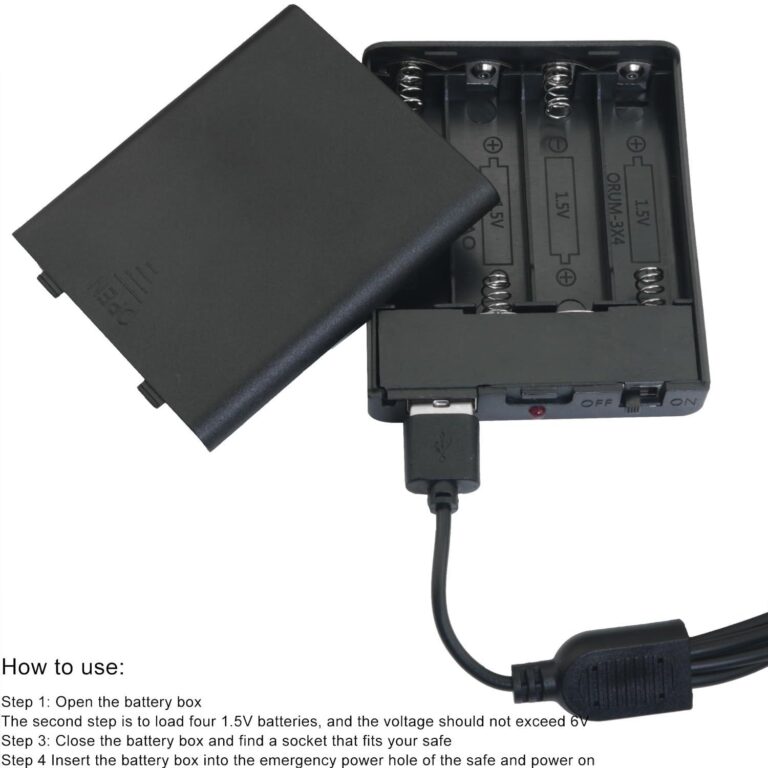Table of Contents
- Choosing the Right Spare Batteries for Your Devices
- Proper Storage Techniques to Prevent Damage and Leakage
- Safe Transportation Practices to Avoid Hazards
- Maximizing Battery Lifespan with Smart Usage Tips
- To Conclude
Choosing the Right Spare Batteries for Your Devices
When selecting backup power sources for your gadgets, it’s crucial to prioritize compatibility and quality to ensure safety and performance. Always opt for batteries that match the voltage and capacity requirements specified by your device’s manufacturer. Using the wrong type can lead to malfunction or even damage. Additionally, consider batteries from reputable brands with stringent quality controls to avoid counterfeits that might pose risks such as leakage or explosion.
Beyond brand and specs, think about the battery chemistry that best suits your needs. For instance:
- Alkaline batteries are affordable and widely available but have a limited shelf life;
- Nickel-metal hydride (NiMH) rechargeables offer excellent longevity and are eco-friendly;
- Lithium-ion batteries provide high energy density and are ideal for high-drain devices.
Always store your spare batteries in a cool, dry place within original packaging or battery cases to prevent accidental shorting. Taking these careful steps guarantees you’ll have reliable power when you need it most, without compromising safety.
Proper Storage Techniques to Prevent Damage and Leakage
To ensure your spare batteries remain in peak condition, always store them in a cool, dry place away from direct sunlight or excessive heat. High temperatures accelerate battery degradation and increase the risk of leakage. Ideally, use an airtight container or a dedicated battery case designed to prevent moisture and dust buildup, which can compromise battery terminals over time. Avoid storing batteries loose in pockets or bags where they could come into contact with metal objects, as this can cause short-circuiting and potential damage.
When organizing your batteries, keep these tips in mind:
- Separate new and used batteries to avoid accidental mixing and uneven discharge.
- Label batteries with purchase dates to keep track of their age and ensure you use the oldest ones first.
- Remove batteries from devices if you won’t be using them for extended periods, preventing drain and corrosion inside your gear.
Safe Transportation Practices to Avoid Hazards
When transporting spare batteries, ensuring their safety should be a top priority to prevent accidents and damage. Always store batteries in their original packaging or use a battery case that keeps the terminals covered and insulated. Exposed terminals can cause short circuits that lead to overheating or even fires, especially when batteries come into contact with metal objects such as keys or coins. Additionally, avoid carrying loose batteries loosely in bags or pockets, as this increases the risk of damage and hazardous situations.
To further minimize risks during transportation, consider these expert tips:
- Separate batteries: Keep new, used, and damaged batteries apart to avoid chemical leaks or energy discharge.
- Choose a cool, dry place: High temperatures can exacerbate battery degradation, so avoid storing them in environments prone to heat.
- Limit quantity per container: If transporting multiple batteries, use containers designed for battery transport to control possible hazards.
- Follow airline regulations: If traveling by air, verify airline guidelines for carrying spare batteries, as specific rules often apply.
Maximizing Battery Lifespan with Smart Usage Tips
To extend the functional life of your batteries, it’s crucial to adopt smart charging and discharging habits. Avoid letting your batteries fully drain before recharging them, as this deep discharge can deteriorate their capacity over time. Instead, aim to recharge when the battery level dips to around 20-30%. Additionally, maintain optimal storage conditions by keeping spare batteries in a cool, dry place-excessive heat or humidity accelerates chemical degradation and can compromise safety.
When carrying spare batteries, consider these practical habits to ensure longevity and safety:
- Use protective cases: Secure batteries in dedicated holders to prevent accidental short circuits.
- Rotate your stock: Regularly use and replace old batteries to avoid having unused, degraded ones.
- Keep them clean: Periodically wipe battery contacts to ensure efficient energy transfer.
- Check expiration dates: Always use batteries before their indicated shelf life ends for maximum performance.
To Conclude
Carrying spare batteries might seem like a small detail, but with the right precautions, it can make all the difference in keeping your devices powered and your day running smoothly. By following these expert tips-storing batteries safely, choosing the right types, and being mindful of temperature and handling-you not only protect your gear but also ensure your own safety. Stay prepared, stay smart, and never let a dead battery slow you down. Safe travels and happy powering up!Check Our Other Blogs
- StunGun – Your Trusted Source for Stun Guns, Laws, and Self-Defense Tips
- PepperSprayLaws – Your Trusted Resource for Pepper Spray Information
- StunGunLaws – Your Trusted Guide to Stun Gun Legality and Safety





